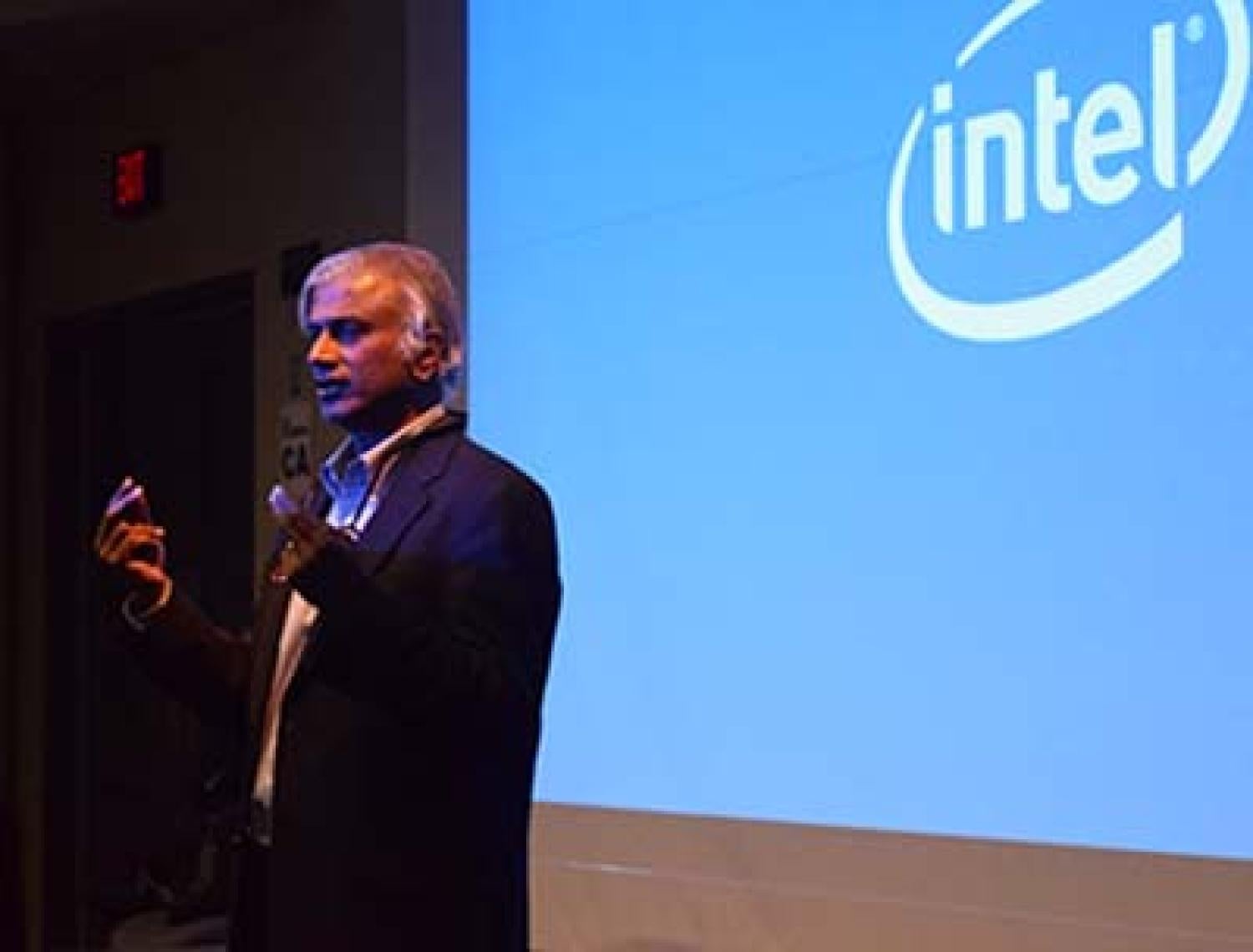ECEE alum: Prepare for explosion in visual media technologies

When people think of futuristic virtual reality, the holodeck from Star Trek often comes to mind. But while that technology may still be a ways off, a CU-Boulder alum says that using visual data to make photos and video feel more personal is a lot closer to reality.
Ramkumar Narayanswamy (PhDElEngr’96) works in systems and software research for Intel Labs, a group of about 1,000 employees who are focused on the next big inventions and innovations for the company. In a presentation at the ATLAS Institute on Nov. 2, 2015, he compared the development of visual technologies today to the Cambrian explosion in the Earth’s evolution.
“With multiple cameras (on mobile devices) and computers, you’re going to start to see visual data in so many ways,” Narayanswamy said. As an example, he showed Intel’s RealSense Snapshop technology, which he helped to develop and which allows users to do things like refocus a photo after it’s been taken or selectively remove color from parts of an image.
He explained that the work his team does involves three important steps – capturing visual data in new ways, creating new computational methods to process that data, and building displays that successfully trick the human brain.
Narayanswamy said the displays are a big challenge for visual media developers right now. He used the example of 3D televisions, which are slowly disappearing from store shelves.
“3D TVs had problems with not putting all of the visual cues together in the right order,” he said, noting that developers have to take into account a number of issues, including motion parallax, binocular disparity and convergence. If the “recipe” is wrong for those items, it can cause motion sickness, headaches and eyestrain.
So what should students focus on if they want to be part of the next innovations in visual technology? Narayanswamy said it takes engineers with a wide range of skills, including computational imaging and sensing; computer vision; human-computer interaction; augmented and virtual reality; and psychophysics.
He added that Intel is always looking for interns looking to be part of tomorrow’s technologies. Learn more in the Intel Student Center.

